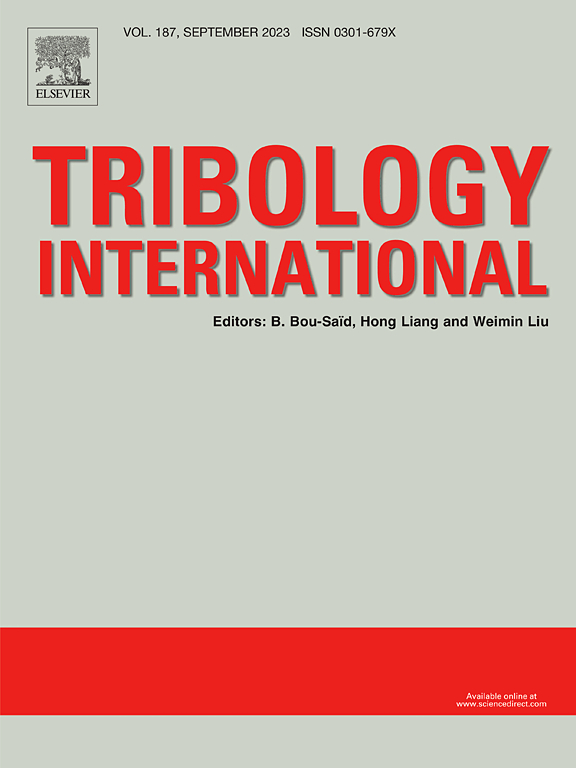Base oil polarity: A critical factor in the thermal stability of copper nanoparticles modified by dialkyl dithiophosphates
IF 6.1
1区 工程技术
Q1 ENGINEERING, MECHANICAL
引用次数: 0
Abstract
Inorganic nanoparticles require surface modification with organic modifiers to achieve long-term stable dispersion in base oil when utilized as lubricating oil additives. The decomposition temperature of the modifier is typically considered the maximum operating temperature of the nano-additive. However, we observed that the sedimentation temperature of copper nanoparticles modified by dialkyl dithiophosphates (DDP) (referred to as CuDDP) in base oil is significantly lower than the decomposition temperature of the modifier itself, and the sedimentation rate varies with the polarity of the base oil. The thermal failure mechanism of CuDDP was analyzed. The results demonstrate that competitive adsorption of the outermost modifier by polar groups of the base oil and the sub-surface modifiers of nanoparticles is the primary cause of thermal instability, which occurs prior to structural changes in the modifier itself. The polar groups of base oil generate stronger electrostatic interactions with the polar end of the modifier, thereby promoting modifier desorption. Consequently, particle sedimentation is attributed to modifier desorption, which disrupts dispersion stability. This study provides critical guidance for designing sustainable nano-additives with high-temperature resistance and offers broad applicability for the practical applications of organic-inorganic hybrid nanoparticles.
基础油极性:二烷基二硫代磷酸盐修饰的铜纳米颗粒热稳定性的关键因素
无机纳米颗粒作为润滑油添加剂使用时,需要用有机改性剂对其表面进行改性,才能在基础油中实现长期稳定的分散。改性剂的分解温度通常被认为是纳米添加剂的最高工作温度。然而,我们观察到,经二烷基二硫代磷酸盐(DDP)(简称CuDDP)修饰的铜纳米颗粒在基础油中的沉降温度明显低于改性剂本身的分解温度,且沉降速率随基础油的极性而变化。分析了CuDDP的热失效机理。结果表明,基础油的最外层改性剂与纳米颗粒的亚表面改性剂的极性基团的竞争吸附是导致热不稳定性的主要原因,这种不稳定性发生在改性剂本身结构变化之前。基础油的极性基团与改性剂的极性端产生更强的静电相互作用,从而促进改性剂的解吸。因此,颗粒沉降归因于改性剂的解吸,这破坏了分散的稳定性。该研究为设计可持续的耐高温纳米添加剂提供了重要的指导,并为有机-无机杂化纳米颗粒的实际应用提供了广泛的适用性。
本文章由计算机程序翻译,如有差异,请以英文原文为准。
求助全文
约1分钟内获得全文
求助全文
来源期刊

Tribology International
工程技术-工程:机械
CiteScore
10.10
自引率
16.10%
发文量
627
审稿时长
35 days
期刊介绍:
Tribology is the science of rubbing surfaces and contributes to every facet of our everyday life, from live cell friction to engine lubrication and seismology. As such tribology is truly multidisciplinary and this extraordinary breadth of scientific interest is reflected in the scope of Tribology International.
Tribology International seeks to publish original research papers of the highest scientific quality to provide an archival resource for scientists from all backgrounds. Written contributions are invited reporting experimental and modelling studies both in established areas of tribology and emerging fields. Scientific topics include the physics or chemistry of tribo-surfaces, bio-tribology, surface engineering and materials, contact mechanics, nano-tribology, lubricants and hydrodynamic lubrication.
 求助内容:
求助内容: 应助结果提醒方式:
应助结果提醒方式:


